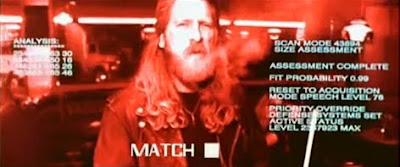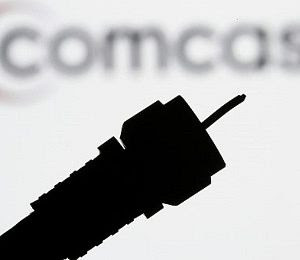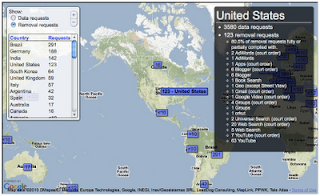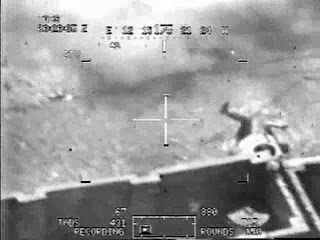hawking: extraterrestrials are almost certain to exist;
if we encounter them, chances are we're f*cked  from bbc
from bbc:
Aliens almost certainly exist but humans should avoid making contact, Professor Stephen Hawking has warned. In a series for the Discovery Channel the renowned astrophysicist said it was "perfectly rational" to assume intelligent life exists elsewhere.
But he warned that aliens might simply raid Earth for resources, then move on. "If aliens visit us, the outcome would be much as when Columbus landed in America, which didn't turn out well for the Native Americans," he said.
Prof Hawking thinks that, rather than actively trying to communicate with extra-terrestrials, humans should do everything possible to avoid contact. He explained: "We only have to look at ourselves to see how intelligent life might develop into something we wouldn't want to meet."related: nasa announces wednesday media teleconference about search for extraterrestrial life & ice on asteroid suggests earth's water came from space
 from threat level
from threat level:
One study after another purports to chronicle how much intellectual property piracy hurts the economy, and contributes to every societal ill from terrorism to child porn & slavery.
A new study unveiled Tuesday sets out to examine intellectual property in a different light: How fair use — which doesn’t require permission from the copyright holder — actually benefits the economy.
The trade group, Computer & Communications Industry Association, in a follow-up to its 2007 report, asks: “What contribution is made to our economy by industries that depend on the limitations to copyright protection when engaged in commerce?”
For the year 2007, the fair-use economy accounted for $4.7 trillion in revenue (.pdf) and $2.2 trillion in value added, roughly one-sixth the total gross domestic product of the United States, according to the study. The fair-use economy also employed more than 17 million people with a $1.2 trillion payroll.
Fair-use-dependent industries include educational institutions, search engines, web hosting providers, software developers and device manufacturers, among others.
To be sure, the government urges caution when analyzing the economics of intellectual property. Still, we thought we’d throw this study into the mix because of its novel approach.
“The protection afforded by fair use and other limitations and exceptions has been a major contributing factor to these economic gains, and will continue to support growth as the U.S. economy becomes even more dependent on information industries,” the study said.
The association’s membership includes Microsoft, Google, eBay, AMD, Yahoo, Oracle and others. Under the Copyright Act, fair use is not copyright infringement. In the software context, for example, software development depends on making temporary copies of copyrighted software to facilitate the programming of interoperability.
cyberwar & repression: corporatist synergy made in hell  from sacramento press
from sacramento press:
Central Intelligence Agency director Leon Panetta told 300 Sacramento Metro Chamber Cap-to-Cap delegates that the next “Pearl Harbor” is likely to be an attack on the United States’ power, financial, military and other Internet systems.
Panetta addressed the Sacramento delegation that includes 43 elected officials and hundreds of business and civic leaders who are in Washington D.C. for the annual program that advocates for the region’s most pressing policy issues. He spoke on Monday, April 19, during the Cap-to-Cap opening breakfast.
“Cyber terrorism” is a new area of concern for the CIA, Panetta said. The United States faces thousands of cyber attacks daily on its Internet networks. The attacks are originating in Russia, China, Iran and from even hackers.
“The next Pearl Harbor is likely to be a cyber attacking going after our grid… and that can literally cripple this country,” Panetta said. “This is a whole new area of threat.”
But cyber terrorism is just one of four primary missions for Panetta, who took over directing the CIA last year after appointment by President Obama. The CIA is also focusing on counter-terrorism, reducing the proliferation of weapons of mass destruction and fighting narcotics trafficking.Al Qaeda is becoming a viscous target, and as CIA and military operations tamp it down in Pakistan, Afghanistan and Iraq, the terrorist elements are moving to places like Somalia, Yemen and North Africa—as well changing its tactics, he said.
“The president’s direction…is we must dismantle and destroy Al Qaeda and its known elements,” he said. “It’s a fundamental mission….The primary effort takes place in Pakistan and tribal areas. We are now focused on Afghanistan and have increased our presence there.”
Meanwhile, CIA is working to help Iraqis fight Al Qaeda. “Even as our military draws down in Iraq, we’ll keep our presence there…to provide intelligence to the Iraqis so they can secure their own country.”
Worrisome, he added, is how Al Qaeda is “coming at us in other ways.” These include using individuals who have clean records and are not being tracked; individuals who are already in the U.S.A. and in contact with Al Qaeda; and individuals who decided to “self-radicalize” and are easily and quickly recruited as terrorists.
Previously, Panetta served as a congressional representative from the Monterey area, rising to the House Budget committee chair, and then latter as President Clinton’s Director of the Office of Management and Budget.
“I’ve spent most of my life on budget issues,” he said, noting the “work we did eventually produced a balanced budget for the country.” When he’s asked why he took on the job at the CIA, he told the group, “Because considering the size of the federal deficit, I’d rather fight Al Qaeda.”
school secretly snapped 1000s of students at homefrom threat level:
A webcam spying scandal at a suburban Philadelphia school district is broadening, with lawyers claiming the district secretly snapped thousands of webcam images of students using school-issued laptops without the pupils’ knowledge or consent.
Some of the images included pictures of youths at home, in bed or even “partially dressed,” according to a Thursday filing in the case. Pupils’ online chats were also captured, as well as a record of the websites they visited.
When the story first broke in February, the district said the cameras were activated only handful of times when a laptop was reported stolen or missing — an assertion lawyers suing the district say is false.
“Discovery to date has now revealed that thousands of webcam pictures and screen shots (.pdf) have been taken from numerous other students in their homes, many of which never reported their laptops lost or missing,” attorney Mark Haltzman wrote in a Thursday federal court filing.
In February, the Lower Merion School District deactivated the webcam-tracking program secretly lodged on 2,300 student laptops...
Thursday’s filing, which claims 400 images of Robbins were taken during a two-week period last fall, also says that an IT administrator at the district “may be a voyeur.” Lawyers suing the district are urging a federal judge presiding over the case to grant a forensic examination of administrator’s personal computer.
The lawsuit said the administrator, who has been placed on paid leave, “invokes the Fifth Amendment to every question asked of her, including a question asked as to whether she had ever downloading (sic) pictures to her own computer, including pictures of students who were naked while in their home.”
The lawsuit seeks class-action status to represent all the district’s 2,300 high school students.
Proposed legislation announced late Thursday by Sen. Arlen Specter (D-Pennsylvania) would make it a federal felony to remotely spy on private residences and hotel rooms with video cameras.
 from antifascist calling
from antifascist calling:
When U.S. Secretary of Defense Robert M. Gates launched Cyber Command (CYBERCOM) last June, the memorandum authorizing its stand-up specified it as a new "subordinate unified command" under U.S. Strategic Command (STRATCOM), one that "must be capable of synchronizing warfighting effects across the global security environment as well as providing support to civil authorities and international partners."
As Antifascist Calling reported at the time, Gates chose Lt. General Keith Alexander, the current Director of the National Security Agency (NSA), to lead the new DOD entity. The agency would be based in Ft. Meade, Maryland, where NSA headquarters are located and the general would direct both organizations.
In that piece I pointed out that STRATCOM is the successor organization to Strategic Air Command (SAC). One of ten Unified Combatant Commands, STRATCOM's brief includes space operations (military satellites), information warfare, missile defense, global command and control, intelligence, surveillance and reconnaissance (ISR), as well as global strike and strategic deterrence, America's first-strike nuclear arsenal. Designating CYBERCOM a STRATCOM branch all but guarantees an aggressive posture. As an organization that will unify all military cyber operations from various service branches under one roof, CYBERCOM will coordinate for example, Air Force development of technologies to deliver what are called "D5 effects" (deceive, deny, disrupt, degrade and destroy).
Ostensibly launched to protect military networks against malicious attacks, the command's offensive nature is underlined by its role as STRATCOM's operational cyber wing. In addition to a defensive brief to "harden" the "dot-mil" domain, the Pentagon plan calls for an offensive capacity, one that will deploy cyber weapons against imperialism's adversaries.
As a leading growth sector in the already-massive Military-Industrial-Security-Complex, the cyberwar market is hitting the corporate "sweet spot" as the Pentagon shifts resources from Cold War "legacy" weapons' systems into what are perceived as "over-the-horizon" offensive capabilities.
In association with STRATCOM, the Armed Forces Communications and Electronics Association (AFCEA), will hold a Cyberspace Symposium, "Ensuring Commanders' Freedom of Action in Cyberspace," May 26-27 in Omaha, Nebraska.
Chock-a-block with heavy-hitters in the defense and security world such as Lockheed Martin, HP, Booz Allen Hamilton, CACI, Cisco, CSC, General Dynamics, QinetiQ, Raytheon and the spooky MITRE Corporation, the symposium seeks to foster "innovation and collaboration between the private sector and government to delve into tough cyber issues." The shin-dig promises to "feature defense contractors and government agencies showcasing their solutions to cyberspace and cyber warfare issues."
During pro forma hearings before the Senate Armed Services Committee (SASC) April 15, Alexander's testimony was short on specifics, as were his written responses to "Advance Questions" submitted to the general by the SASC.
During Thursday's testimony, Alexander told the Senate panel that the command "isn't about efforts to militarize cyberspace," but rather "is about safeguarding the integrity of our military's critical information systems."
"If confirmed" Alexander averred, "I will operate within applicable laws, policies and authorities. I will also identify any gaps in doctrine, policy and law that may prevent national objectives from being fully realized or executed."
What those "national objectives" are and how they might be "executed" are not publicly spelled out, but can be inferred from a wealth of documents and statements from leading cyberwar proponents.
As we will explore below, despite hyperbole to the contrary, CYBERCOM represents long-standing Pentagon plans to militarize cyberspace as part of its so-called "Revolution in Military Affairs" and transform the internet into an offensive weapon for waging aggressive war.
 from threat level
from threat level:
Yahoo prevailed Friday over Colorado federal prosecutors in a legal battle testing whether the Constitution’s warrant requirements apply to Americans’ e-mail.
Saying the contested e-mail “would not be helpful to the government’s investigation,” (.pdf) the authorities withdrew demands for e-mail in a pending and sealed criminal case. For the moment, the move ends litigation over the hotly contested issue of when a warrant under the Fourth Amendment is required for Yahoo and other e-mail providers to release consumer communications to the authorities.
The brouhaha concerned a 1986 law that already allows the government to obtain a suspect’s e-mail from an internet service provider or webmail provider without a probable-cause warrant, once it’s been stored for 180 days or more. The government contended, and then backed off Friday, that it could get e-mail less than 180-days old if that e-mail has been read by the owner, and that the Constitution’s Fourth Amendment protections don’t apply.
Yahoo was backed (.pdf) by the Electronic Frontier Foundation, Google and the Center for Democracy & Technology in challenging the government’s position. It defied a court order to turn over those e-mails to the feds in a Colorado criminal probe that is under seal. Litigation over the topic ensued, and the government blinked in a legal standoff highlighting antiquated privacy laws.
Had the courts adopted the government’s position, (.pdf) the vast majority of Americans’ e-mail would be accessible to the government without probable cause, whenever law enforcement believes the messages would be relevant to a criminal investigation, even if the e-mail’s owner was not suspected of wrongdoing.
Still, the government’s move does not resolve the privacy issue, but merely instead delays it for a later day.flashback: fcc loses net neutrality battle against comcast
 from allgov
from allgov:
Ken Hayworth, a postdoctoral fellow at Harvard, has come up with an unusual potential form of immortality by preserving the human brain in a computer. Most theories of extending life, such as using experimental supplements or super-sensitive health monitoring, work with a person’s existing body. Hayworth suggests that it might be possible to copy your brain, complete with all its thoughts, memories and learned abilities, for use in a form other than the body you have used all your life.
Theoretically, human thoughts can be copied and loaded onto a hard drive, Hayworth insists, which is why he’s seeking funding for a Brain Preservation Technology Prize which would solicit solutions for his hypothesis. The process would likely entail freezing or preserving the brain shortly before death, then slicing it into nanometer thin wafers, scanning it and uploading it onto a computer.flashback: ted williams' severed head abused in cryonics lab
would microsoft 'guardian angel' turn our brains to mush?  from nick eaton
from nick eaton:
I was reading TechFlash's piece on Microsoft's new "guardian angel" patent, and it stirred up a creepy feeling inside of me. In the time I've been covering Microsoft for seattlepi.com, I've had this strange shudder a handful of times. And I'm wondering if other people feel it, as well.
TechFlash reported that Microsoft has been granted a patent on an "intelligent personal agent" that could predict a user's wants and actions. If the user is at a shopping mall and the software's artificial intelligence knows it's lunchtime, the "guardian angel" could search for nearby restaurants that serve the user's preferred foods, choose a cuisine based on the user's recent meals, check for seating availability, and make lunch reservations.
This is an example laid out in Microsoft's 2006 patent application, which lists Bill Gates and Ray Ozzie as two of the inventors.
But I know of an existing device that already has this function. It's called the human brain. Call me pessimistic if you want, but do we really need the artificial intelligence of a digital guardian angel to supplant the organic intelligence of our own selves?
court: fcc had no right to sanction comcast for p2p blocking  from washington post
from washington post:
Comcast on Tuesday won its federal lawsuit against the Federal Communications Commission in a ruling that undermines the agency's ability to regulate Internet service providers just as it unrolls a sweeping broadband agenda.
The decision also sparks pressing questions on how the agency will respond, with public interest groups advocating that the FCC attempt to move those services into a regulatory regime clearly under the agency's control.
The U.S. Court of Appeals for the District of Columbia, in a 3-0 decision, ruled that the FCC lacked the authority to require Comcast, the nation's biggest broadband services provider, to treat all Internet traffic equally on its network.
That decision -- based on a 2008 ruling under former FCC chairman Kevin Martin -- addresses Comcast's argument that the agency "failed to justify exercising jurisdiction" when it ruled Comcast violated broadband principles by blocking or slowing a peer-sharing Web site, Bit Torrent.
But it also unleashed a broader debate over the agency's ability to regulate broadband service providers such as AT&T, Comcast and Verizon Communications.
The judges focused on whether the FCC has legal authority over broadband services, which are categorized separately from phone, cable television and wireless services. The agency currently has only "ancillary authority" over broadband services, a decision made by past agency leaders in an attempt to keep the fast-moving Internet services market at an arm's distance from the agency.update: undaunted by comcast court victory,
fcc moves ahead with broadband plans
 from ap
from ap:
After a decade of development, the Air Force this month plans to launch a robotic spacecraft resembling a small space shuttle to conduct technology tests in orbit and then glide home to a California runway.
The ultimate purpose of the X-37B Orbital Test Vehicle and details about the craft, which has been passed between several government agencies, however, remain a mystery as it is prepared for launch April 19 from Cape Canaveral, Fla.
"As long as you're confused you're in good shape," said defense analyst John Pike, director of Globalsecurity.org. "I looked into this a couple of years ago – the entire sort of hypersonic, suborbital, scramjet nest of programs – of which there are upwards of a dozen. The more I studied it the less I understood it."
The quietly scheduled launch culminates the project's long and expensive journey from NASA to the Pentagon's research and development arm and then to a secretive Air Force unit.
Hundreds of millions of dollars have been spent on the X-37 program, but the current total has not been released.
The launch date, landing sites and a fact sheet were released by Air Force spokeswoman Maj. Angie I. Blair. She said more information would be released soon, but questions on cost and other matters submitted by e-mail weren't answered by Friday.While the massive space shuttles have been likened to cargo-hauling trucks, the X-37B is more like a sports car, with the equivalent trunk capacity.
Built by Boeing Co.'s Phantom Works, the 11,000-pound craft is 9 1/2 feet tall and just over 29 feet long, with a wingspan of less than 15 feet. It has two angled tail fins rather than a single vertical stabilizer.
Unlike the shuttle, it will be launched like a satellite, housed in a fairing atop an expendable Atlas V rocket, and deploy solar panels to provide electrical power in orbit.
The Air Force released only a general description of the mission objectives: testing of guidance, navigation, control, thermal protection and autonomous operation in orbit, re-entry and landing.
The mission's length was not released but the Air Force said the X-37B can stay in orbit for 270 days. The primary landing site will be northwest of Los Angeles at coastal Vandenberg Air Force Base.
The significance of the X-37B is unclear because the program has been around for so long, said Peter A. Wilson, a senior defense research analyst for the RAND Corp. who several years ago served as executive director of a congressional panel that evaluated national security space launch requirements.
"From my perspective it's a little puzzling as to whether this is the beginning of a program or the end of one," Wilson said Friday in a telephone interview from Washington, D.C.
As NASA anticipated the end of the shuttle, the X-37B was viewed as a working prototype of the next-generation design of a fully reusable spacecraft, but the space agency lost interest and the Air Force picked it up, Wilson said.
"It's viewed as a prototype of a vehicle that could carry small payloads into orbit, carry out a variety of military missions and then return to Earth," he said.
The Air Force statement said the X-37 program is being used "to continue full-scale development" and orbital testing of a long-duration, reusable space vehicle.
Wilson sees the upcoming launch as "a one-shot deal."
He acknowledged that he does not know if there is a classified portion of the program but said there is no evidence of a second vehicle being built to follow the prototype. In aerospace, a prototype typically remains a test vehicle used to prove and improve designs for successive operational vehicles.
To fully function as a completely reusable launch system there would also have to be development of a booster rocket that is capable of landing itself back on Earth to be reassembled with the spacecraft, according to Wilson, who does not see any support for such an initiative.
Wilson also said the usefulness of payloads such as small military satellites is in question, which would undercut the need for the launch system.
The X-37B is now under the direction of the Air Force's Rapid Capabilities Office. Its mission is to speed up development of combat-support systems and weapons systems.
Operating since 2003, the office has worked on several things, including upgrading the air defenses around the nation's capital as an anti-terrorism measure and assessing threats to U.S. combat operations, according to an Air Force fact sheet.
NASA began the X-37 program in 1999 in a cooperative deal with Boeing to roughly split the $173 million cost of developing an experimental space plane. The Air Force put in a small share.
The X-37, initially intended to be carried into space by shuttles in 2003, was a larger version of the Air Force X-40A, a concept for a "Space Maneuver Vehicle" to put small military satellites in orbit. The X-40A was dropped from a helicopter in glide and landing tests but was never capable of actual space flight.
In 2002, NASA awarded Boeing a $301 million contract to complete a version of the X-37 to be used in approach and landing tests and begin designing an orbital version that would fly in 2006.
But in 2004 NASA turned the project over to the Defense Advanced Research Projects Agency, the Defense Department's research and development arm. In 2006, the X-37 was put through captive-carry and drop tests using Mojave-based Scaled Composite LLC's White Knight, the jet that launched SpaceShipOne on the first private suborbital manned space flights.
The Air Force then began work on the X-37B, projecting it would fly in 2008. An Air Force News story at the time reported that the first one or two flights would check out the performance of the vehicle itself and then it would become a space test platform with unspecified components flown in its experiment bay.
 lockmart supports nsa's 2010 cyber defense exercise*
lockmart supports nsa's 2010 cyber defense exercise* 














